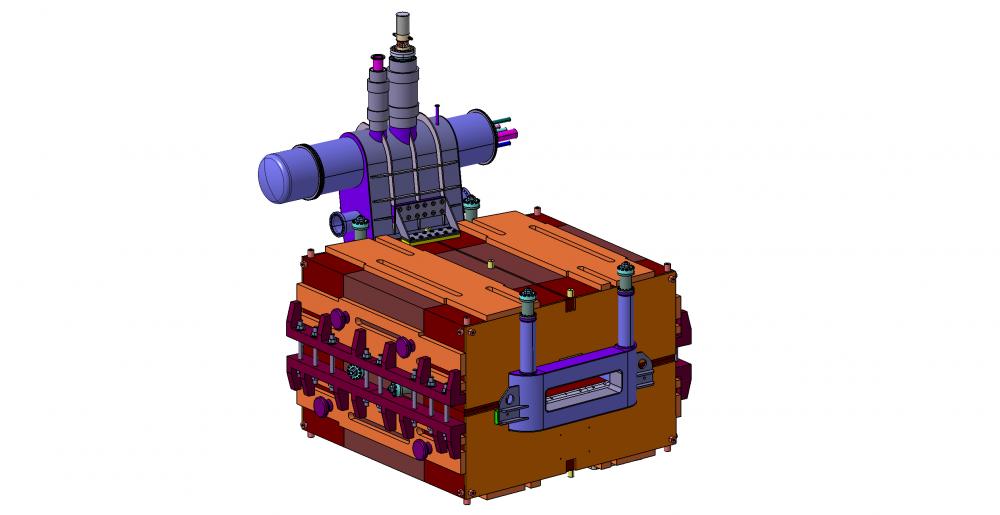The FAIR (Facility for Antiproton and Ion Research) complex is a new-generation particle accelerator currently under construction in Darmstadt, Germany, designed to explore and understand the nature of matter and the evolution of the universe.
Built as part of an international collaboration involving nearly 50 countries, FAIR is based on the experiment and technological developments that already exist at the GSI laboratory infrastructures. The installation of two synchrotron rings will supply ion beams 100 to 1000 times more intense than those currently available, making it possible, when used with specific targets, to produce secondary beams of unstable nuclei or antiprotons. The Super-FRS fragment separator will spatially separate these beams within a few hundred nanoseconds, enabling very short-lived nuclei to be studied. The Super-FRS is composed of a large number of magnets, including 24 superconducting dipoles. As part of the French contribution to the FAIR project, SACM is responsible for monitoring the manufacture of these 24 dipoles and will take part in the cold tests planned at CERN from 2017 onwards.

View of the complete magnet with its ferromagnetic yoke (brown). The cryogenic tower located on the left provides external connections to the cryogenic system, pumping, instrumentation and power supply. The total mass is 40 tonnes.
The design of these magnets must meet several requirements:
? A maximum field of 1.6 T at the center of the aperture.
? A radius of curvature of 12.5 m for the particle trajectory.
? A wide aperture in both the horizontal and vertical axes (± 190 mm x ± 70 mm).
? A uniform magnetic field integral of ± 3x10-4 throughout the useful area.
These dipoles are called "superferric" as the steel yoke that traditionally ensures flux closure controls their magnetic field quality directly. The coils are made from NbTi wire welded into a copper channel, providing greater stability and protection in the event of an abrupt transition from a superconducting to a resistive state. The cold mass, cooled to 4.2 K, is composed of two trapezoidal coils inserted into a steel enclosure, which serves both as a mechanical structure to absorb magnetic stresses and as a liquid helium tank. The entire system is surrounded by an 80 K helium-gas-cooled copper shield which is inserted into a stainless steel cryostat. Over the last two years, the department has produced a full design based on the results obtained on an initial prototype designed, manufactured and tested as part of a Chinese contribution to the FAIR project. SACM has also prepared technical specifications for FAIR's call for tenders planned for 2017. Finally, it is responsible for designing 24 vacuum chambers that will be produced in Novosibirsk as part of the Russian contribution to the FAIR project, for use in the ultimate installation on the Darmstadt site. Installation of the final magnet within the FAIR complex is planned for 2021.
• superconducting magnet physics and technology › Superconducting Magnets for Particle Physics Research
